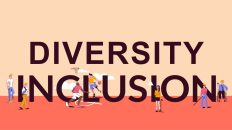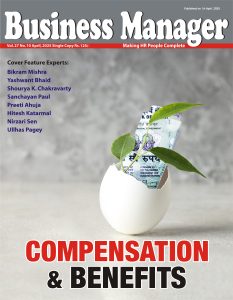New Delhi, 14 January 2025: Generative AI (GenAI) will revolutionize India’s workforce and transform the country’s economic landscape by 2030, according to the EY India report, ‘How much productivity can GenAI unlock in India? The AIdea of India: 2025’. By 2030, AI adoption could transform 38 million jobs, driving a 2.61% productivity boost to the Indian economy through gains in the organized sector and a potential for additional 2.82% with the adoption of Gen AI by the unorganized sector.
GenAI is poised to transform every job, unlocking immense potential for productivity, and economic gains. The report shows that 24% of tasks across industries have the potential for full automation, while another 42% can be enhanced through AI, freeing up between 8-10 hours per week for knowledge workers. At an industry level, the largest productivity gains are expected in the services sector due to its higher labour share to gross output while manufacturing and construction will see smaller impact.
The EY report offers insights into the GenAI talent landscape and the adoption rate of enterprises. The findings arise from a comprehensive survey that engaged over 125 C-suite participants, revealing that skills shortages remain as a significant barrier to AI adoption. Only 3% of Indian enterprises possess sufficient in-house talent and resources to make the most of what AI has to offer, while the remaining 97% of executives cite lack of talent as a primary hurdle.
Also read – e2E Rail Appoints Dr. Aman Jain as Chief Human Resources Officer
Rajiv Memani, Chairman and CEO, EY India, says “GenAI is transforming India’s economic landscape by unlocking unprecedented opportunities across sectors. This revolution will fundamentally reshape jobs, driving productivity and innovation. Building talent pipelines and prioritizing upskilling must be at the forefront of every organisation. By fostering public-private collaborations and investing in talent development, India can also become a global hub for AI skilled talent.”
Discussing survey findings, Mahesh Makhija, Technology Consulting Leader, EY India, said, “In industries like financial services, healthcare and retail, AI will reshape basic processes including customer acquisition, operations and service, while IT/ITeS and BPO will undergo more dramatic changes. Next-generation industries like biotech, advanced manufacturing and renewables will have the potential to leapfrog to AI-first business models. To maximise the potential for economic growth, India needs to focus on AI policy agenda, compute infrastructure, AI research, addressing challenges in responsible governance, intellectual property rights, and data protection.”
While the promise of AI is vast, the survey reveals that adoption is still in its early stages. Only 15% of surveyed enterprises have implemented GenAI in production, with 34% having completed proof of concepts (POCs) and 11% working on productionalizing successful POCs. 8% of those who have experimented with GenAI report having faced challenges in realizing tangible impact. On the other hand, a significant 36% of survey participants have yet to commence any experimentation, reflecting the early stage of adoption.
Enterprises in India are also at different stages of data readiness. Only 3% of surveyed enterprises report being fully ready, with 23% reporting that they’re in no state of data readiness to take up AI deployments.
GenAI’s impact on productivity
EY’s analysis of over 10,000 tasks across industries shows varying productivity gains across sectors. Amongst the business processes to see the most impact is call centre management, which is likely to witness an 80% productivity enhancement, and software development with a potential for 61% growth in productivity. Content development and distribution with 45%, customer services at 44%, and sales and marketing at 41% follow. Productivity boost in IT/ITeS is expected to be around 19%, followed by healthcare at 13% and banking/insurance at 8-9%. auto and pharma can expect a marginal 2% boost given a limited labour contribution to the gross output of these industries.
Also read – L&T’s HR Head comes forward to clarify about Chairman’s 90-hour Workweek Remark
To assess GenAI’s impact on productivity, tasks were analyzed based on exposure (potential impact of GenAI), complementarity (level of human oversight needed) and intensity (frequency of tasks). A ‘Productivity Uplift’ Indicator was created, to quantify this potential impact in terms of Automation (elimination of the task), Augmentation (doing the same task better using GenAI) and Amplification (enhancing the nature of the task and making it richer).
Focus on ROI and falling AI costs
Being able to measure Return on Investment (ROI) is critical for GenAI investment decisions. Our survey of Indian enterprises also points to an inability to fully measure and allocate AI related costs. Of the 15% of Indian enterprises that report having GenAI workloads in production, only 8% (about half) report being able to fully measure and allocate AI costs. The survey highlights the need for a systematic means to predict the costs of, and measure the impact of, AI before we see greater adoption.
At the same time, the cost of AI deployments has fallen, driven by the open-source movement and the trend to use purpose specific small language models (SLMs). The report identifies cost reductions, such as an 80% drop in foundational model API prices over the past two years, as a critical enabler for broader adoption. With deployment costs as low as INR 120 per hour, AI is becoming increasingly accessible, especially for small and medium enterprises.
Stay connected with us on social media platforms for instant updates click here to join our LinkedIn, Twitter & Facebook



































